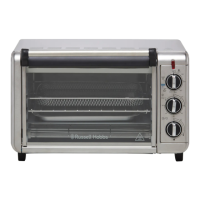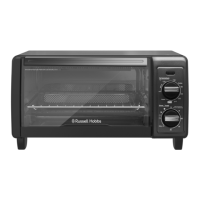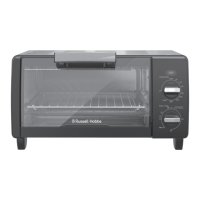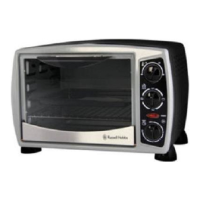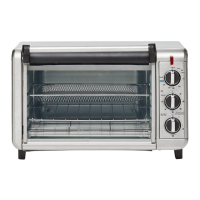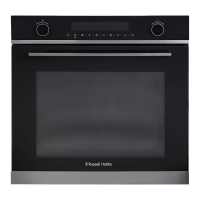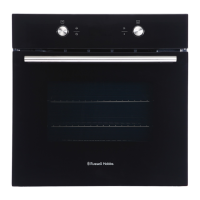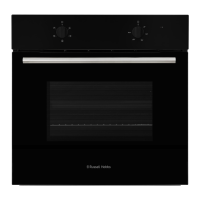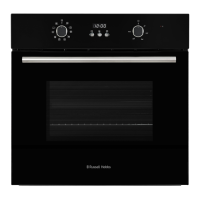C SELF CLEAN
50 Empty the bowl, and wipe off any excess fat with paper towel.
51 Put 1½ litres of water into the bowl, and add a squirt of washing up liquid.
52 If they’re dirty, put the racks into the bowl.
53 Put the lid on, press the lock, lower the handle, and set the temperature to 125°C.
54 Plug the oven into a power socket, and set the timer to 10 minutes.
55 When the bell sounds, unplug the oven, and leave everything to cool.
56 Wipe the heater surfaces with a damp cloth.
57 Empty the bowl, rinse, and dry.
51 Don’t use harsh or abrasive cleaners, solvents, scourers, wire wool, or soap pads.
52 You may wash the bowl in a dishwasher, but we don’t recommend this. The harsh
environment inside the dishwasher may affect the surface finishes. Any damage should be
cosmetic, and should not affect the functionality of the oven.
C COOKING TIMES & FOOD SAFETY
Use these times purely as a guide. They’re for fresh or fully defrosted food. When cooking frozen
foods, add 2-5 minutes for seafood, and 10-20 minutes for meat and poultry, depending on the
thickness and density of the food.
Check food is cooked through before serving. If in doubt, cook it a bit more.
To be certain, use a cooking thermometer. Internal temperatures are measured at the end of the
cooking time.
Cook meat, poultry, and any derivatives (mince, burgers, etc.) till the juices run clear. Cook fish till
the flesh is opaque throughout.
When cooking pre-packed foods, follow any guidelines on the package or label.
food time (minutes) temperature (°C) internal temperature (°C)
roast beef (1.2kg) 40-50 175-200 60 med rare, 70 medium
pork loin & crackling (1.6kg) 80-90 200-225 70-75
rolled pork (1.6kg) 90-120 175 70-75
rolled shoulder of lamb (1kg) 50-60 175 70
leg of lamb (1.6kg) 60-70 200-225 70
roast chicken (1.2-1.6kg) 50-80 200 80
fish fillets (4 x 150g) 10 -15 175 the flesh should be opaque
fish steaks (4 x 150g) 8-12 175 the flesh should be opaque
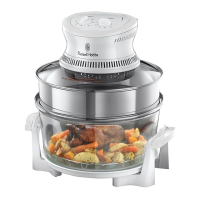
